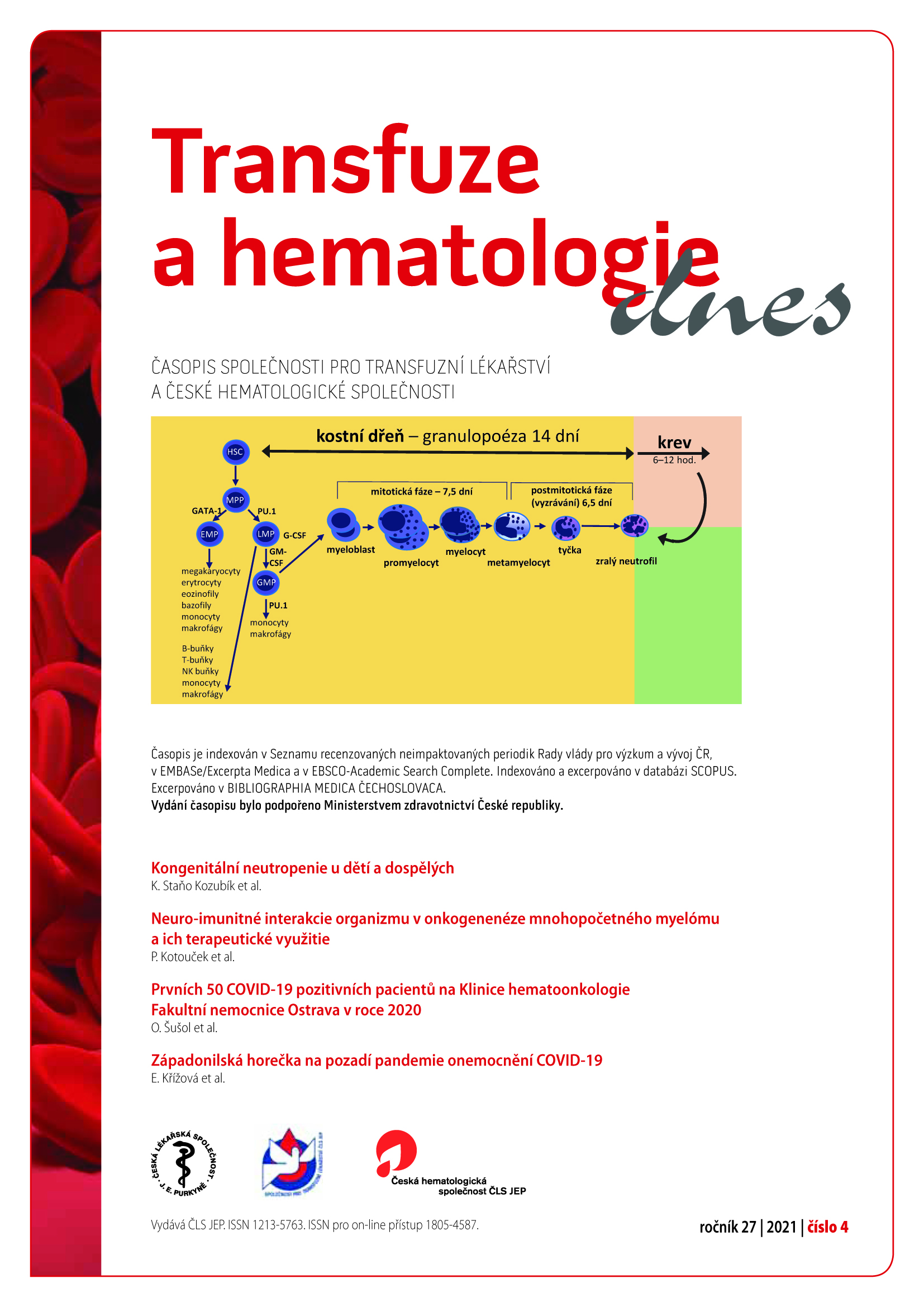Hypereozinofílie
Keywords:
hypereosinophilia, hypereosinophilic syndrome, chronic eosinophilicAbstract
Hypereozinophilia (HE) and hypereosinophilic syndrome (HES) represent very polymorphic syndromes often with very difficult differencial diagnosis. HES with serious end-organ damage must be treated promptly, especially if there is cardial involvement, Most frequent cause of HE worldwide are parasitic infections, which are rare in our geographical conditions. In developed countries main causes of HE are atopies (asthma, rhinitis, atopic dermatoses), drug reactions, autoagressive diseases and malignancies. In about 50% patients with HES no specific cause of HE may be detected, we are speaking about idiopathic HES (iHES). The first-line therapy of serious HES represent high-dose costicosteroids, promising are biological treatments in form of monoclonal antibodies (mepolizumab, reslizumab, benralizumab,alemtuzumab). In HE with proven aberant tyrosin-kinase activity tyrosin-kinase inhibitors (TKI) are indicated. Chronic eosinophilic leukemia –not otherwise specified (CEL-NOS) requires specific attitude.With progress in research the specific cause of some iHES may be disclosed in the near future.
Key words: hypereosinophilia, hypereosinophilic syndrome, chronic eosinophilic leukemia, diagnosis and therapy


